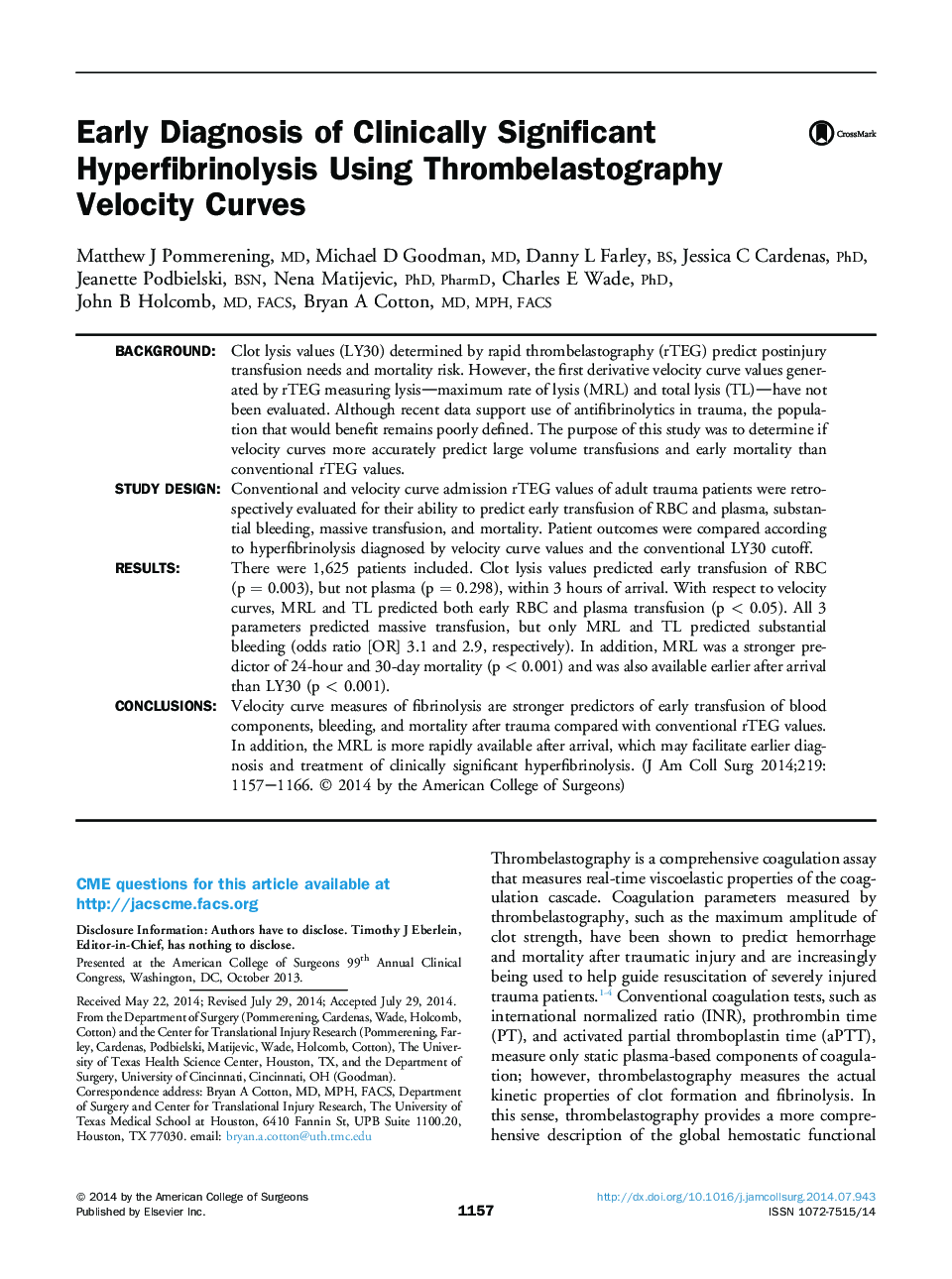| Article ID | Journal | Published Year | Pages | File Type |
|---|---|---|---|---|
| 4291307 | Journal of the American College of Surgeons | 2014 | 10 Pages |
BackgroundClot lysis values (LY30) determined by rapid thrombelastography (rTEG) predict postinjury transfusion needs and mortality risk. However, the first derivative velocity curve values generated by rTEG measuring lysis—maximum rate of lysis (MRL) and total lysis (TL)—have not been evaluated. Although recent data support use of antifibrinolytics in trauma, the population that would benefit remains poorly defined. The purpose of this study was to determine if velocity curves more accurately predict large volume transfusions and early mortality than conventional rTEG values.Study DesignConventional and velocity curve admission rTEG values of adult trauma patients were retrospectively evaluated for their ability to predict early transfusion of RBC and plasma, substantial bleeding, massive transfusion, and mortality. Patient outcomes were compared according to hyperfibrinolysis diagnosed by velocity curve values and the conventional LY30 cutoff.ResultsThere were 1,625 patients included. Clot lysis values predicted early transfusion of RBC (p = 0.003), but not plasma (p = 0.298), within 3 hours of arrival. With respect to velocity curves, MRL and TL predicted both early RBC and plasma transfusion (p < 0.05). All 3 parameters predicted massive transfusion, but only MRL and TL predicted substantial bleeding (odds ratio [OR] 3.1 and 2.9, respectively). In addition, MRL was a stronger predictor of 24-hour and 30-day mortality (p < 0.001) and was also available earlier after arrival than LY30 (p < 0.001).ConclusionsVelocity curve measures of fibrinolysis are stronger predictors of early transfusion of blood components, bleeding, and mortality after trauma compared with conventional rTEG values. In addition, the MRL is more rapidly available after arrival, which may facilitate earlier diagnosis and treatment of clinically significant hyperfibrinolysis.
